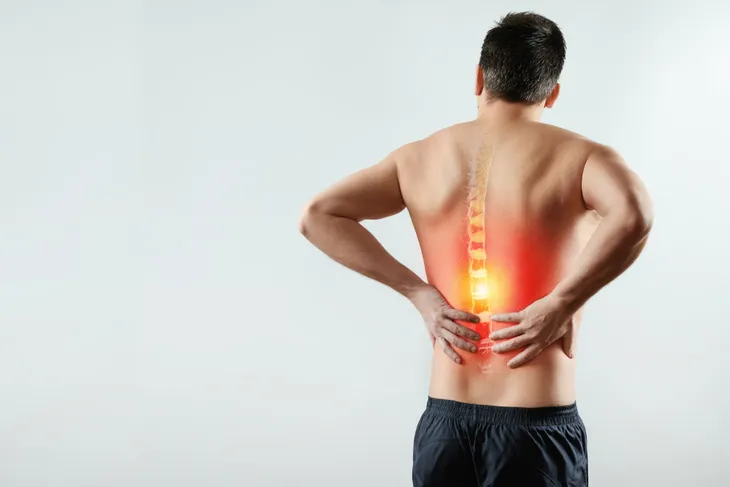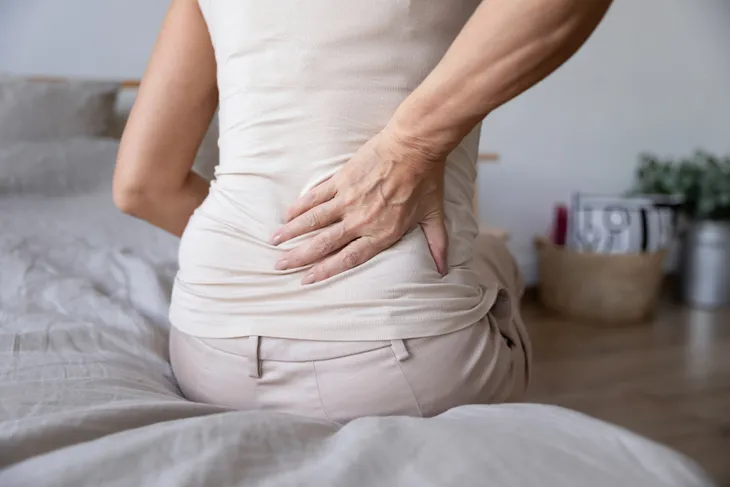Sciatica is a common issue among older adults. By definition, sciatica is pain affecting the back, hip, or outer side of the leg which is caused by the compression of a spinal nerve root in the lower back. Oftentimes it’s due to the degeneration of an intervertebral disk. The pain radiates along the length of the sciatic nerve, from the lower back through the hips and glutes, and down the legs. It’s usually reserved to one side of the body, sometimes accompanied by inflammation and numbness in the affected leg.
Sciatica can be caused from herniated disks, a bone spur on the spine, or spinal stenosis which is the narrowing of the spine which compresses part of the nerve. The pain associated with sciatica tends to vary from person to person. Sometimes movement makes the pain worse, for other people there is numbness or weakness in the legs and feet, radiating from the lower back and down the leg. These are common complaints, along with the sensation of pins and needles, and tingling in the toes and feet.
However, the most common symptom of sciatica is excruciating pain from the lower back to the glutes, or around the hip and down the back of the leg into the hamstring region. To help ease any discomfort associated with sciatica, here are some stretches that can help bring relief, particularly to any back pain.
Risk Factors of Sciatica
While sciatica is common among older adults, there are some other risk factors that can increase a person’s chances of developing it. The main risk factors are:
- Changes in the spine that occur as a result of age.
- Excessive body weight that puts stress on the spine.
- A sedentary lifestyle (i.e. sitting for long periods of time).
- Diabetes, as there is a higher risk of nerve damage.
Treatment Options for Sciatica
Sciatica causes excruciating and uncomfortable pain. Thankfully, there are some treatment options available to help the pain subside…
- Cold treatments reduce swelling and ease pain. Ice packs or cold compresses work well.
- Heat can also help, but only after cold has been used for a couple days to help reduce the swelling. Afterwards, alternate between cold and heat.
- Stretching the entire body will lengthen it all out. From the spine and lower back, to the glutes and hamstrings.
- Over-the-counter medications such as aspirin (only taken if possible and in small doses) or ibuprofen to help with inflammation or swelling.
- Regular exercise, such as low impact activities (i.e. swimming and cycling). Later incorporate cardio, core stability, and strength training.
- Physical therapy can help strengthen the core and back muscles with the support of a therapist.
- Prescription medications such as muscle relaxers can help especially when the pain is severe, but caution using over long periods of time.
- Alternative medications such as acupuncture, massage, and chiropractors are worth a try in conjunction with other options such as exercise.
How to Prevent Sciatica
While there are many treatment options available for sciatica that can help relief the pain and symptoms, prevention is always the best medicine. Here’s are some ways to prevent sciatica…
- Exercise often with back and core strengthening exercises. Also, stretching exercises will lengthen the body.
- Maintain good posture, while sitting and standing. The core and back strengthening will help with posture as well.
- Be gentle with movements like twisting and bending. Be aware when picking things up or putting them down. Lift with your legs.
But most of all, when pain arises, take it easy and listen to your body. Remind yourself that pain does not mean stop. Take it slow and easy, do what feels best, but keep moving!
Sciatica Stretches and Exercises for Back Pain Relief
In this learning level workout you will learn about sciatica, and what exercises and stretches can be done to help alleviate pain and other sensations it can cause.
Stretching these areas-spine, lower back muscles, gluteals, hips, hamstrings-will help lessen the pain and sensations sciatica can cause.
For more videos by Meredith, check out Senior Fitness with Meredith.






